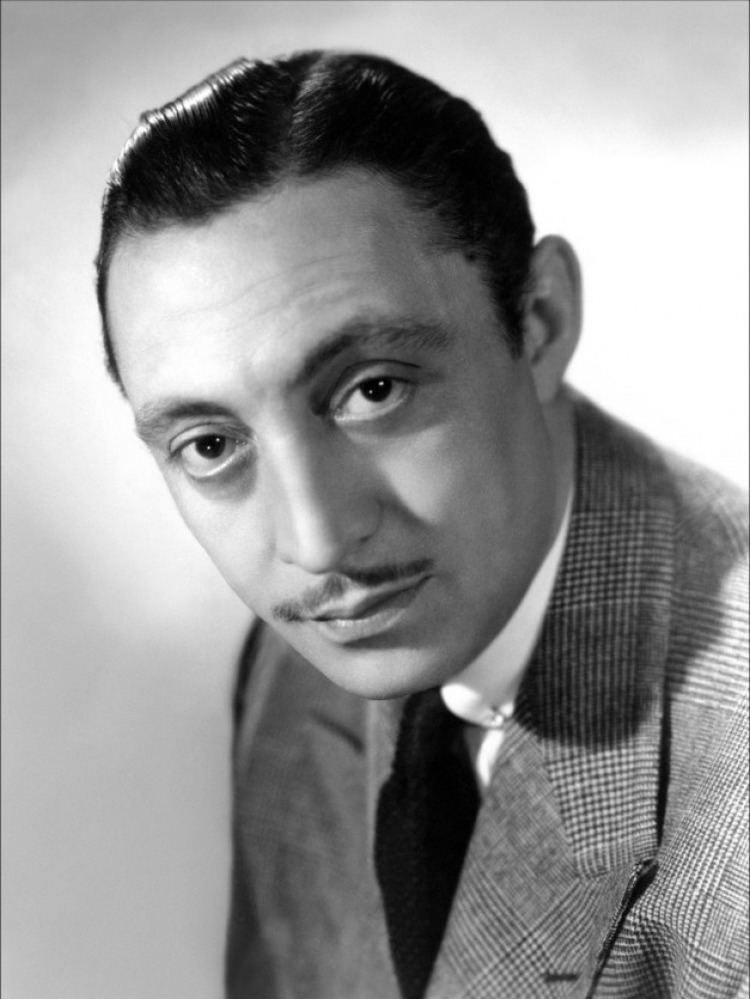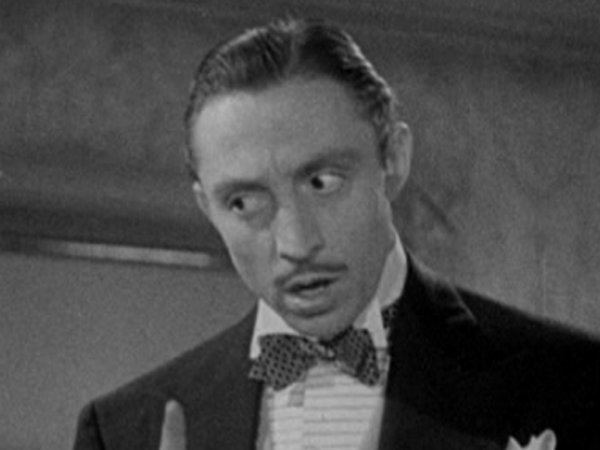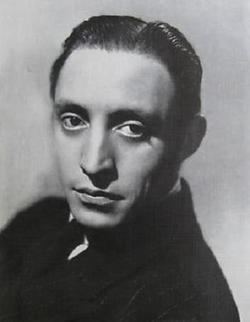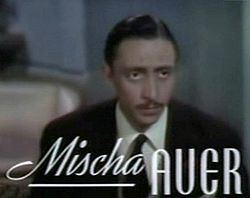Years active 1928-1967 Name Mischa Auer | Role Actor | |
 | ||
Full Name Mischa Ounskowsky Born 17 November 1905 ( 1905-11-17 ) St. Petersburg, Russia Education Ethical Culture Fieldston School Spouse Elise Souls Lee (m. 1965–1967) Children Anthony Auer, Mischa Auer Jr., Zoe Auer Movies My Man Godfrey, You Can't Take It with You, Destry Rides Again, And Then There Were None, Mr Arkadin Similar People Gregory La Cava, Charles Winninger, Henry Koster, Rene Clair, Eric S Hatch | ||
MISCHA AUER TRIBUTE
Mischa Auer (17 November 1905 – 5 March 1967) was a Russian-born American actor who moved to Hollywood in the late 1920s. He first appeared in film in 1928. Auer had a long career playing in many of the era's best known films, and he received an Academy Award nomination in 1936. He later moved into television and acted in films again in France and Italy well into the 1960s.
Contents
- MISCHA AUER TRIBUTE
- Mischa auer ten little indians
- Early life
- Career
- Personal life
- Philanthropy
- Death
- Filmography
- References

Mischa auer ten little indians
Early life

Auer was born Mikhail Semyonovich Unskovsky (Михаил Семёнович Унсковский) in St. Petersburg, Russia. His name is usually seen as Mischa Ounskowsky, Mischa being the German transliteration of Misha (the diminutive form of Mikhail), and Ounskowsky being the French transliteration of his surname. Auer's parents were a Russian naval officer and the daughter of Hungarian-born Jewish violinist Leopold Auer and his wife, Nadine Pelikan. His father died when he was three, and he was taken in by his grandfather. Leopold Auer emigrated to the United States after the Russian Revolution. Mischa Auer and his mother became separated, but were reunited during the Russian Civil War. She, however, died of typhus. Auer was able to contact his grandfather, who brought the teenager to the United States.
Career

He began performing on the stage in the 1920s in Bertha Kalich's Thalia Yiddish Theater, then moved to Hollywood, where he first appeared in 1928 in Something Always Happens. He appeared in several small, mostly uncredited roles into the 1930s, appearing in such films as Rasputin and the Empress, Viva Villa!, The Yellow Ticket, the George Gershwin musical Delicious, the Paramount Pictures all-star revue Paramount on Parade and The Lives of a Bengal Lancer.
In 1936, Auer was cast as Alice Brady's protégé in the comedy My Man Godfrey, for which he was nominated for the Academy Award for Best Supporting Actor. Prior to that, he had been mostly playing villains. He stated, "That one role made a comic out of me." From then on, he was regularly cast in zany comedy roles. Auer played the ballet instructor Kolenkov in the Best Picture-winning You Can't Take It with You and the prince-turned-fashion designer in Walter Wanger's Vogues of 1938. Auer can also be seen cavorting in such films as: Arsène Lupin (1932), One Hundred Men and a Girl, Hold That Ghost, Destry Rides Again, Spring Parade, Hellzapoppin', Cracked Nuts, Lady in the Dark, and Up in Mabel's Room (1944). He was also one of the large cast of And Then There Were None, as well as the vehicles for Lily Pons.

In the 1950s, Auer appeared on several episodic television series, such as Westinghouse Desilu Playhouse, Studio One, Broadway Television Theatre and The Chevrolet Tele-Theatre as well as in Orson Welles' Mr. Arkadin (1955). In the 1960s, he made several films in France and Italy, including The Christmas That Almost Wasn't.
Personal life
Auer married four times and had three children. Mischa's first wife was Norma Tillman (1931 - 1941), whom he married in 1931. They had a son Anthony and a daughter Zoia. They divorced in 1941. In he same year, he married Joyce Hunter (4 December 1941 - 1950), his second wife, with whom he lived for 9 years. His third wife was Susanne Kalish (5 May 1950 - 1957), and they had one daughter. His fourth wife was Elise Souls Lee (1965 - 5 March 1967).
Philanthropy
Mischa Auer paid the utility bills of the Holy Virgin Mary Russian Orthodox Cathedral (in Los Angeles) for several years.
Death
He died of cardiovascular disease in Rome in 1967 and was interred at Prospect Hill Cemetery in Gloversville, New York.
